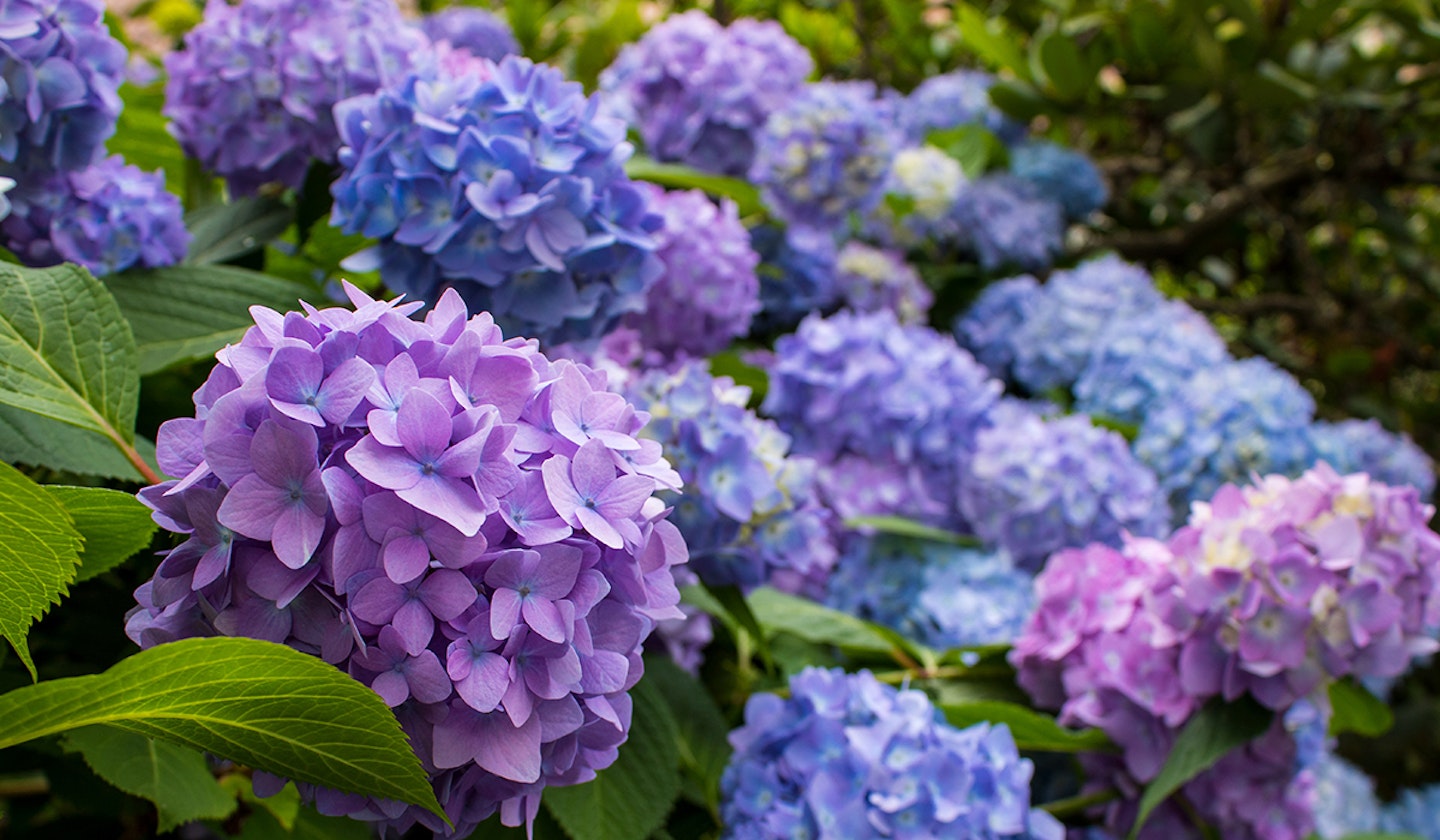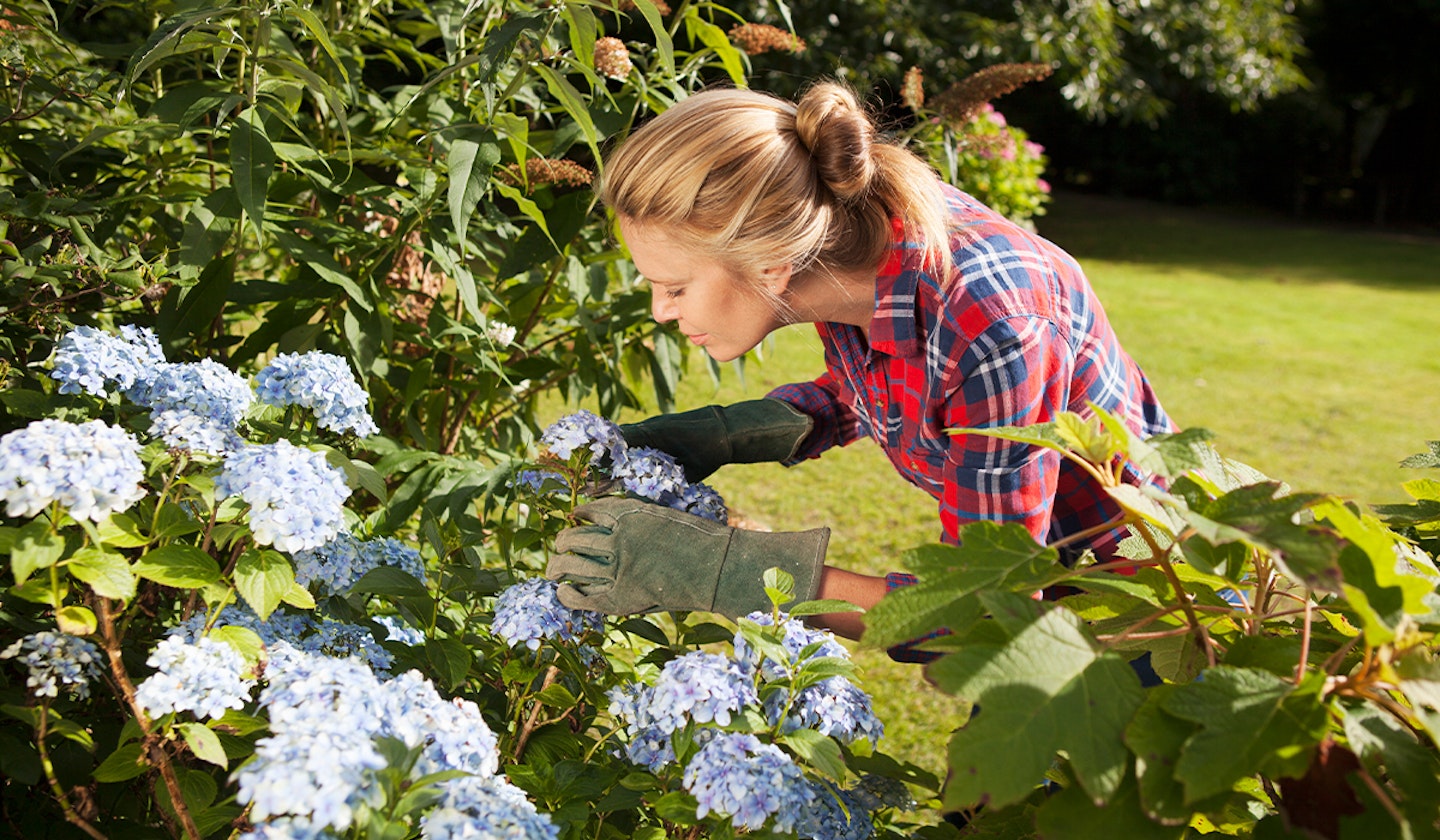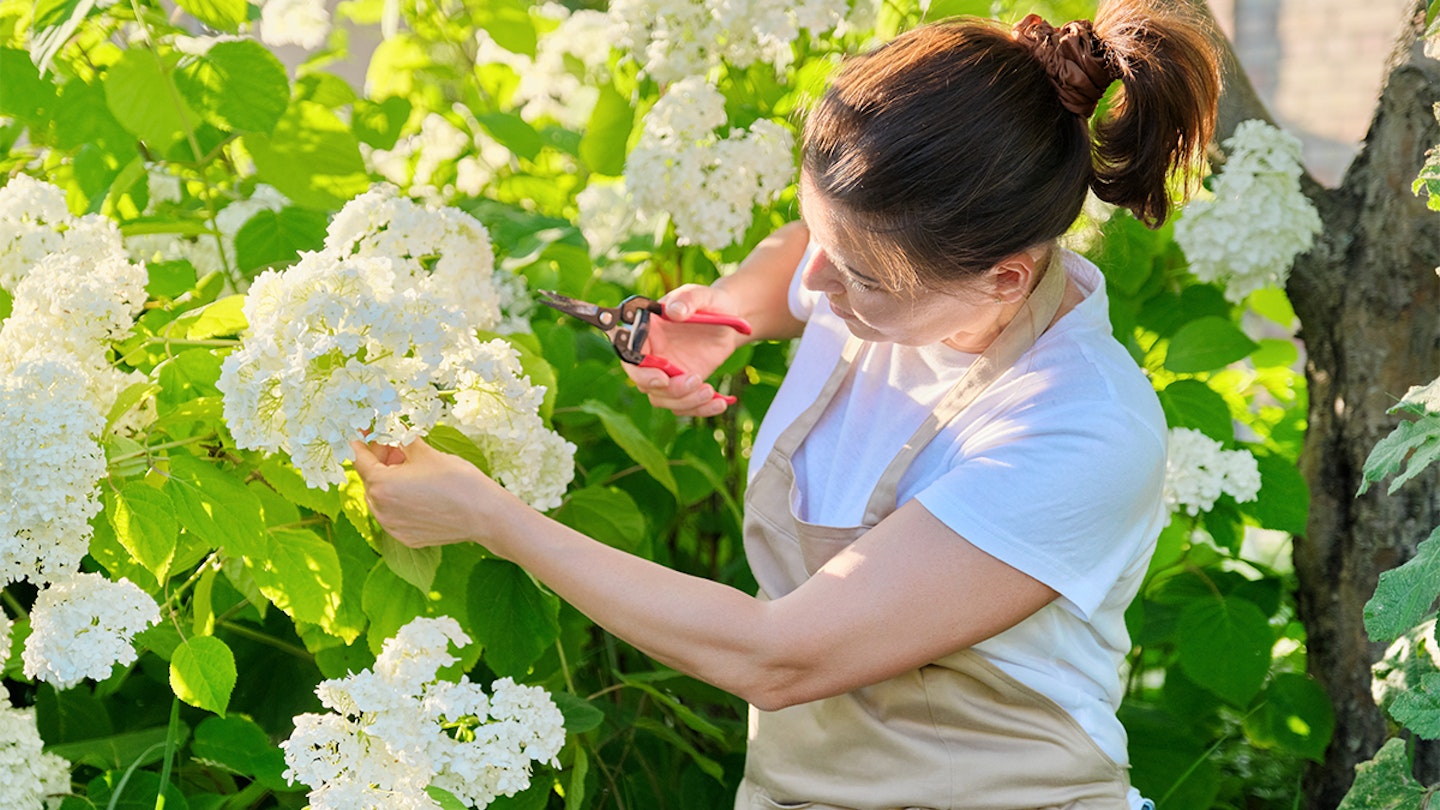If your bright and beautiful hydrangea plant has started to look a little sad over winter, it's time to get pruning. If you're not sure when you should start pruning or how much to cut down, we've created this useful guide to help you prune your hydrangea.
When should you prune a hydrangea?

Spring is the perfect time to prune your hydrangea as this is when the petals will have turned brown and the plant will be looking a little neglected. Pruning at this time of the year stops the plant from becoming woody and congested, allowing the plant to channel all of its energy into growing those colourful large blooms they're so famous for.
If you have a climbing hydrangea, it's best to wait and prune this in the summer after flowering.
It's important not to prune your hydrangea until the spring, making sure you leave the plant for the duration of summer, autumn and winter, as the cork like stems are able to store enough water to last them throughout the season. If you cut back the plant during this time, they won't have enough water to last them through the colder months and they might die off.
How to prune a hydrangea

Before pruning check which kind of hydrangea you have, as some hydrangeas require a different kind of pruning to others.
If you have a Hydrangea macrophylla, Hydrangea aspera, Hydrangea serrata or Hydrangea quercifolia, these only need a light pruning and you just need to cut the old flower head back to the new buds.
If you have a Hydrangea paniculata and Hydrangea aborescens, you can cut these back much harder.
Don't worry if you're not sure which type of hydrangea you have, just deadhead the old flower heads and see how it gets on during the warmer months.
Always use a pair of secateurs when cutting your hydrangea and be very careful - the buds tend to be quite delicate and can be easily knocked off if you're too heavy handed.
Be sure to also cut out any thin or weaker stems from the base of the plant as this will allow any new shoots to grow from the base.
When pruning Hydrangea paniculata and Hydrangea aborescens, aim to cut stems to a length of 30cm and 60cm pruning just above the healthy buds on each stem.
What to do after pruning
After pruning, you'll want to mulch your plant with well rotted manure or compost.
Most popular articles to read next
Grow these climbing roses to create the most charming English garden!
